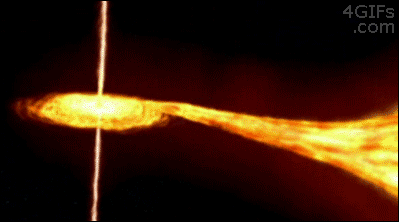Y’all I’m Positively Howling, It’s Almost EXACTLY What Dairine Said To Nita About Kit Waaay Back


Y’all I’m positively howling, it’s almost EXACTLY what Dairine said to Nita about Kit waaay back in Deep Wizardry
Paging the newly-fledged-and-recruiting Dairine/Mehrnaz squad @hencegoodfortune @shamrockjolnes @inkidink @imaginariumgeographica
More Posts from Outofambit and Others
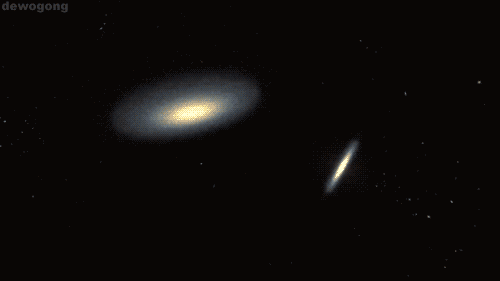



New observations of a ‘dust trap’ around a young star solve long-standing planet formation mystery Astronomers using the new Atacama Large Millimeter/submillimeter Array have imaged a region around a young star where dust particles can grow by clumping together. This is the first time that such a dust trap has been clearly observed and modeled. It solves a long-standing mystery about how dust particles in discs grow to larger sizes so that they can eventually form comets, planets and other rocky bodies.
Astronomers now know that planets around other stars are plentiful. But they do not fully understand how they form and there are many aspects of the formation of comets, planets and other rocky bodies that remain a mystery. However, new observations exploiting the power of ALMA are now answering one of the biggest questions: how do tiny grains of dust in the disc around a young star grow bigger and bigger—to eventually become rubble, and even boulders well beyond a metre in size?
Computer models suggest that dust grains grow when they collide and stick together. However, when these bigger grains collide again at high speed they are often smashed to pieces and sent back to square one. Even when this does not happen, the models show that the larger grains would quickly move inwards because of friction between the dust and gas and fall onto their parent star, leaving no chance that they could grow even further.
Somehow the dust needs a safe haven where the particles can continue growing until they are big enough to survive on their own. Such “dust traps” have been proposed, but there was no observational proof of their existence up to now.
Bottom left image: Artist’s impression of the proposed disk structure of Oph IRS 48. The brown spots represent the large and small grains. The larger grains detected by ALMA are concentrated in the dust trap at the bottom of the image. The blue represents the distribution of carbon monoxide gas. The gap in the disk is shown with the proposed planetary body that is sweeping the area clear and providing the conditions necessary to form the dust trap. Credit: Nienke van der Marel
Nienke van der Marel, a PhD student at Leiden Observatory in the Netherlands, and lead author of the article, was using ALMA along with her co-workers, to study the disc in a system called Oph-IRS 48. They found that the star was circled by a ring of gas with a central hole that was probably created by an unseen planet or companion star. Earlier observations using ESO’s Very Large Telescope had already shown that the small dust particles also formed a similar ring structure. But the new ALMA view of where the larger millimetre-sized dust particles were found was very different!
“At first the shape of the dust in the image came as a complete surprise to us,” says van der Marel. “Instead of the ring we had expected to see, we found a very clear cashew-nut shape! We had to convince ourselves that this feature was real, but the strong signal and sharpness of the ALMA observations left no doubt about the structure. Then we realised what we had found.”
What had been discovered was a region where bigger dust grains were trapped and could grow much larger by colliding and sticking together. This was a dust trap—just what the theorists were looking for.
Bottom right image: ALMA image of the dust trap around Oph IRS 48. The distinctive crescent-shaped feature comes from the accumulation of larger dust grains in the outer regions of the disk. This provides the safe haven dust grains need to grow into larger and larger objects. Credit: ALMA (ESO/NAOJ/NRAO) / Nienke van der Marel
As van der Marel explains: “It’s likely that we are looking at a kind of comet factory as the conditions are right for the particles to grow from millimetre to comet size. The dust is not likely to form full-sized planets at this distance from the star. But in the near future ALMA will be able to observe dust traps closer to their parent stars, where the same mechanisms are at work. Such dust traps really would be the cradles for new-born planets.”
The dust trap forms as bigger dust particles move in the direction of regions of higher pressure. Computer modelling has shown that such a high pressure region can originate from the motions of the gas at the edge of a gas hole—just like the one found in this disc.
“The combination of modelling work and high quality observations of ALMA makes this a unique project”, says Cornelis Dullemond from the Institute for Theoretical Astrophysics in Heidelberg, Germany, who is an expert on dust evolution and disc modelling, and a member of the team. “Around the time that these observations were obtained, we were working on models predicting exactly these kinds of structures: a very lucky coincidence.”
The observations were made while the ALMA array was still being constructed. They made use of the ALMA Band 9 receivers—European-made devices that allow ALMA to create its so far sharpest images.
“These observations show that ALMA is capable of delivering transformational science, even with less than half of the full array in use,” says Ewine van Dishoeck of the Leiden Observatory, who has been a major contributor to the ALMA project for more than 20 years. “The incredible jump in both sensitivity and image sharpness in Band 9 gives us the opportunity to study basic aspects of planet formation in ways that were simply not possible before.”
ORBITAL MECHANICS
Complexity Graphics by Tatiana Plakhova
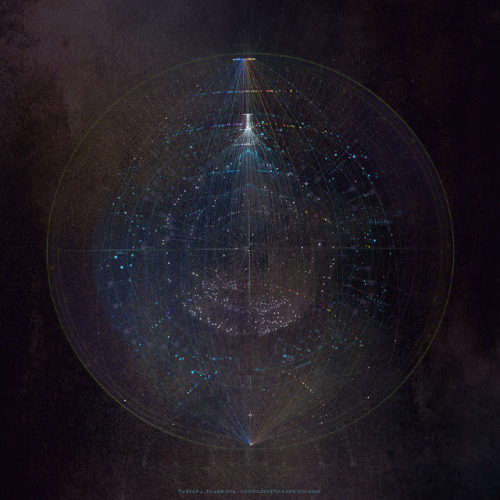
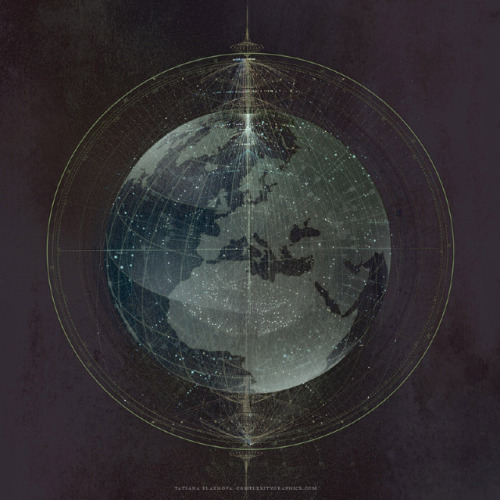
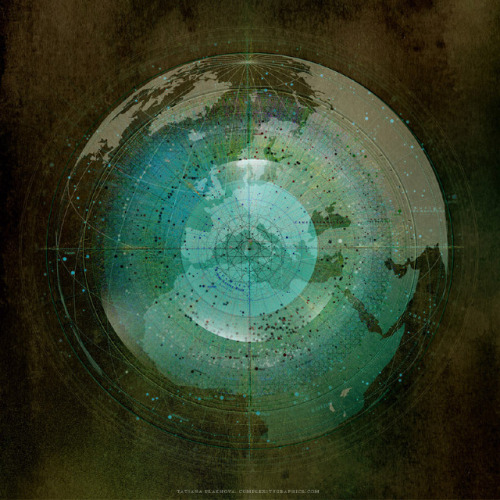
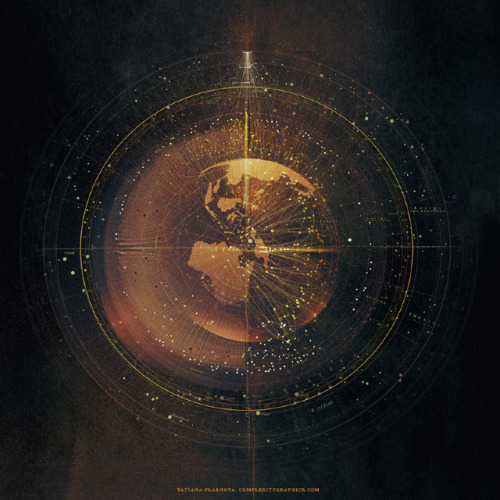
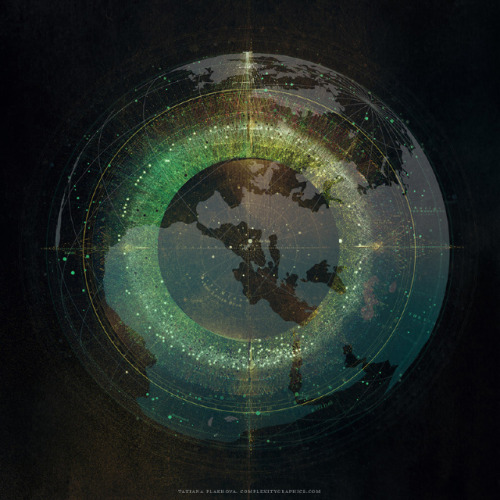
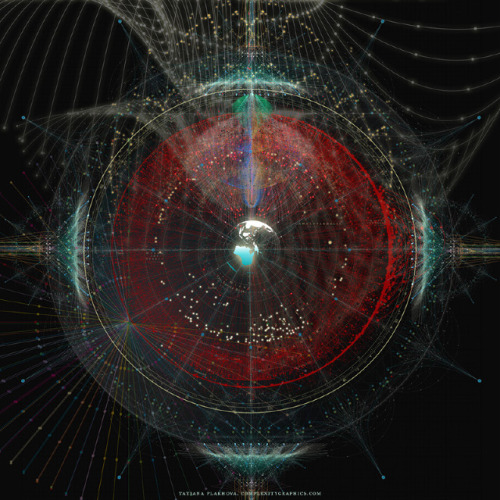

"Eavesdropping on whale songs over the last six years is providing new information vital to answering questions about these giants of the ocean.
The number of whale songs detected is associated with shifting food sources, according to the California scientists—and the number of days humpbacks have been singing has nearly doubled.
When monitoring baleen whale songs in the Pacific Ocean, researchers found year-to-year variations correlated with changes in the availability of the species they forage on.
In vast oceans, monitoring populations of large marine animals can be a “major challenge” for ecologists, explained Dr. John Ryan, a biological oceanographer at the Monterey Bay Aquarium Research Institute in California (MBARI).
Their team deployed underwater microphones called hydrophones to study and track baleen whales, which communicate over long distances through sound.
“Surprisingly, the acoustic behavior of baleen whales provides insights about which species can better adapt to changing ocean conditions,” said Dr. Ryan, a lead author of the study.
They also monitored songs from blue, fin, and humpback whales off the West Coast of the U.S. to see what the song data could reveal about the health of their ecosystem.
The findings, published in the journal PLOS One, showed “large” year-to-year variations in whale song detection.
“The amount of humpback whale song continually increased, with their songs being detected on 34% of days at the beginning of the study and rising to 76% of days after six years,” said Dr. Ryan.
“These increases consistently tracked improved foraging conditions for humpback whales across all study years—large increases in krill abundance, followed by large increases in anchovy abundance.
“In contrast, blue and fin whale song rose primarily during the years of increasing krill abundance.
“This distinction of humpback whales is consistent with their ability to switch between dominant prey. An analysis of skin biopsy samples confirmed that changes had occurred in the whales’ diets.”
He explained that other factors, including the local abundance of whales, may have contributed to patterns in song detections observed in some years, but changes in foraging conditions were the most consistent factor.
“Overall, the study indicates that seasonal and annual changes in the amount of baleen whale song detected may mirror shifts in the local food web.”
WHALES ON THE COMEBACK TRAIL: • Gray Whale, Extinct for Centuries in Atlantic, Is Spotted in Cape Cod • Sighting of Many Blue Whales Around Seychelles is First in Decades – ‘Phenomenal’ • Majestic Sei Whales Reappear in Argentine Waters After Nearly a Century
“The results suggest that an understanding of the relationship between whale song detection and food availability may help researchers to interpret future hydrophone data, both for scientific research and whale management efforts”, which could better protect endangered species."
-via Good News Network, March 1, 2025




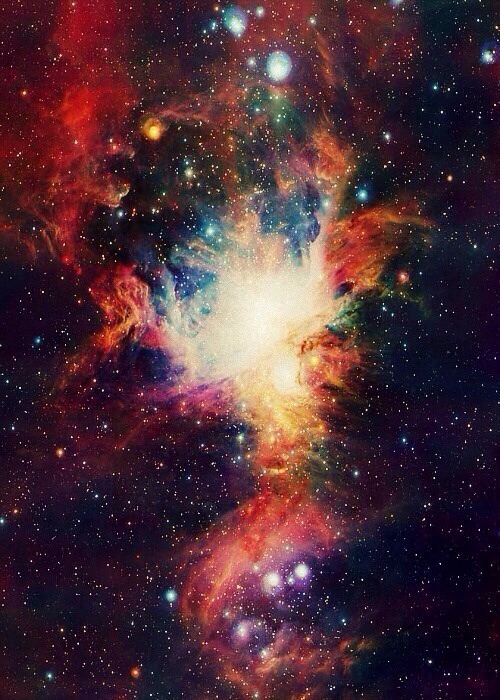


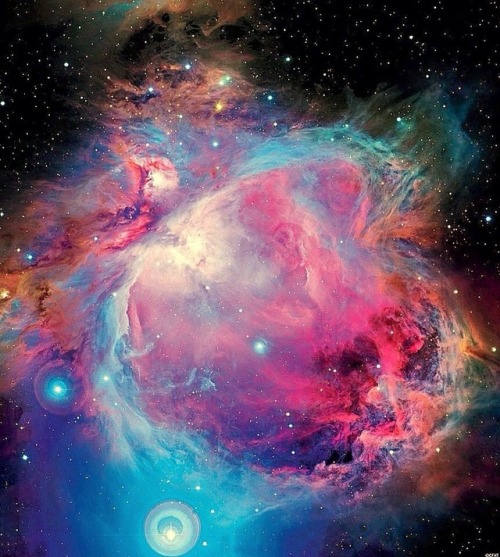


Space, guys… SPACE!!!!
In the OH SWEET POWERS THAT BE, HOW DID THEY FIND OUT...? dep't...
I was just ordering some flour from our local miller, Kells Wholemeal. Their big bag of plain flour is way cheaper/better value than buying it bag-by-small-bag from the grocery store. (We "decant" the flour bags into five-kilo plastic birdseed buckets, and stack them up out in the boot room at the back of the cottage.)
The other thing we usually get from them (besides yeast and bread flour) is chocolate for baking. I was adding a bag of this stuff (which is extremely good)...

... and then noticed something slightly unnerving.

...The notation: "Only for use as an ingredient in food making."
And my first thought, off But what the hell else are we going to be using chocolate for...?
...OH SHIT, THEY'VE FOUND OUT ABOUT CARMELA. THE JIG IS UP.
And then I relaxed. Because (a) She doesn't get that much of her chocolate in this country. If she's after this stuff, she'll grab it elsewhere in the EU.
And (b):
...They've got to catch her first. :)

(per the note from @anoddreindeer: Huh, weird about that. I need to check what the SSL on the main [under-construction] Errantry Concordance site is up to. Meanwhile, dropping the "s" off the "https" seems to sort it for the moment...)
A solar eclipse and the Milky Way seen from the ISS
I am practically in tears over how beautiful this image is.
same. i promise i teared up a little….
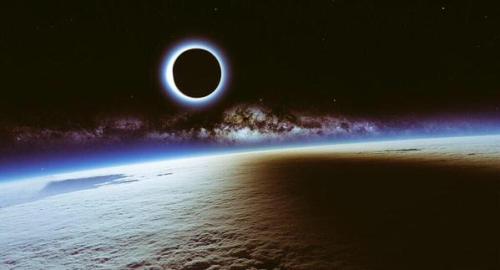



The Journey to Mars Begins Tomorrow
NASA is preparing for the first test flight of the Orion crew vehicle set for an unmanned launch on Dec. 4 at 7:05 a.m. EST from Cape Canaveral, Florida.
The Orion spacecraft is designed to eventually take astronauts beyond low-Earth orbit to destinations never explored by humans. It will serve as the exploration vehicle that will carry the crew to distant planetary bodies, provide emergency abort capability, sustain the crew during space travel, and provide safe reentry from deep space.
This mission is the first of three trial runs that the Orion mission must overcome before NASA deems it safe enough for human space travel.
The next test flights in 2018 and 2021 will use NASA’s Space Launch System rocket (SLS), which is currently in development. When it’s finished, SLS will be the most powerful rocket ever built, boasting even more thrust than the Saturn V booster that blasted astronauts toward the moon in the Apollo era.
The spacecraft will launch atop a Delta IV Heavy, a rocket built and operated by United Launch Alliance. While this launch vehicle will allow Orion to reach an altitude high enough to meet the objectives for this test, a much larger, human-rated rocket will be needed for the vast distances of future exploration missions.
Exploration Flight Test-1, will mark the farthest distance traveled by a human spaceflight vehicle since 1972 made by Apollo 17.
During its grueling four-and-half-hour test mission, NASA’s Orion space capsule must shoot 3,600 miles away from Earth (15 times higher than the International Space Station!), orbit the planet twice, and brave a thick belt of cosmic radiation.
Upon re-entry it must deploy 11 parachutes to slow down from 20,000 miles per hour to 20 mph, while withstanding 4,000-degree Fahrenheit temperatures before plunging into the Pacific Ocean.
Check out these incredible photos from the development and testing of the spacecraft.
Countdown, launch and mission coverage will begin at 4:30 a.m. on NASA TV which is available on air and streaming at nasa.gov/nasatv
-
 becauseforoncethisisme liked this · 4 months ago
becauseforoncethisisme liked this · 4 months ago -
 smartbrained liked this · 4 years ago
smartbrained liked this · 4 years ago -
 jedi-from-mimas liked this · 4 years ago
jedi-from-mimas liked this · 4 years ago -
 dameamaryllis liked this · 5 years ago
dameamaryllis liked this · 5 years ago -
 amastodonofconflict reblogged this · 5 years ago
amastodonofconflict reblogged this · 5 years ago -
 amastodonofconflict liked this · 5 years ago
amastodonofconflict liked this · 5 years ago -
 badgerhuan liked this · 5 years ago
badgerhuan liked this · 5 years ago -
 hegglespeggles liked this · 5 years ago
hegglespeggles liked this · 5 years ago -
 outofambit reblogged this · 5 years ago
outofambit reblogged this · 5 years ago -
 dubiousculturalartifact reblogged this · 5 years ago
dubiousculturalartifact reblogged this · 5 years ago -
 astraldepths liked this · 5 years ago
astraldepths liked this · 5 years ago -
 toofrenchtofunction liked this · 5 years ago
toofrenchtofunction liked this · 5 years ago -
 renee-mariposa liked this · 5 years ago
renee-mariposa liked this · 5 years ago -
 theamazingrosinki liked this · 5 years ago
theamazingrosinki liked this · 5 years ago -
 patron-saints liked this · 5 years ago
patron-saints liked this · 5 years ago -
 humanrebel liked this · 5 years ago
humanrebel liked this · 5 years ago -
 rainywithachanceofstars liked this · 5 years ago
rainywithachanceofstars liked this · 5 years ago -
 causality-a liked this · 5 years ago
causality-a liked this · 5 years ago -
 writerblock233 liked this · 5 years ago
writerblock233 liked this · 5 years ago -
 tsukuyomi-selene reblogged this · 5 years ago
tsukuyomi-selene reblogged this · 5 years ago -
 tsukuyomi-selene liked this · 5 years ago
tsukuyomi-selene liked this · 5 years ago -
 semiotomatics reblogged this · 5 years ago
semiotomatics reblogged this · 5 years ago -
 cheloneuniverse liked this · 5 years ago
cheloneuniverse liked this · 5 years ago -
 spanthedistance liked this · 5 years ago
spanthedistance liked this · 5 years ago -
 sanders2017 liked this · 5 years ago
sanders2017 liked this · 5 years ago -
 princefuckyouknickers liked this · 5 years ago
princefuckyouknickers liked this · 5 years ago -
 jolesofthehowls liked this · 5 years ago
jolesofthehowls liked this · 5 years ago -
 mysteriouslypinkconnoisseur liked this · 5 years ago
mysteriouslypinkconnoisseur liked this · 5 years ago -
 browncoatparadox liked this · 5 years ago
browncoatparadox liked this · 5 years ago -
 cameoappearance liked this · 5 years ago
cameoappearance liked this · 5 years ago -
 adrawatcher liked this · 5 years ago
adrawatcher liked this · 5 years ago -
 professorsparklepants reblogged this · 5 years ago
professorsparklepants reblogged this · 5 years ago -
 lizzieraindrops reblogged this · 5 years ago
lizzieraindrops reblogged this · 5 years ago -
 strivia liked this · 6 years ago
strivia liked this · 6 years ago -
 artemissoteira liked this · 6 years ago
artemissoteira liked this · 6 years ago -
 yusukesmomjeans reblogged this · 6 years ago
yusukesmomjeans reblogged this · 6 years ago -
 the-book-of-night-with-moon liked this · 7 years ago
the-book-of-night-with-moon liked this · 7 years ago -
 the-book-of-night-with-moon reblogged this · 7 years ago
the-book-of-night-with-moon reblogged this · 7 years ago -
 toastymeister liked this · 7 years ago
toastymeister liked this · 7 years ago -
 sandersgreysage liked this · 7 years ago
sandersgreysage liked this · 7 years ago -
 curls-cat liked this · 8 years ago
curls-cat liked this · 8 years ago -
 astahfrith reblogged this · 8 years ago
astahfrith reblogged this · 8 years ago -
 re--wire liked this · 8 years ago
re--wire liked this · 8 years ago -
 autisticace liked this · 8 years ago
autisticace liked this · 8 years ago -
 killerblackberrypie reblogged this · 8 years ago
killerblackberrypie reblogged this · 8 years ago -
 songofsunset liked this · 8 years ago
songofsunset liked this · 8 years ago -
 firebreathing-bookworm reblogged this · 8 years ago
firebreathing-bookworm reblogged this · 8 years ago
A personal temporospatial claudication for Young Wizards fandom-related posts and general space nonsense.
288 posts
